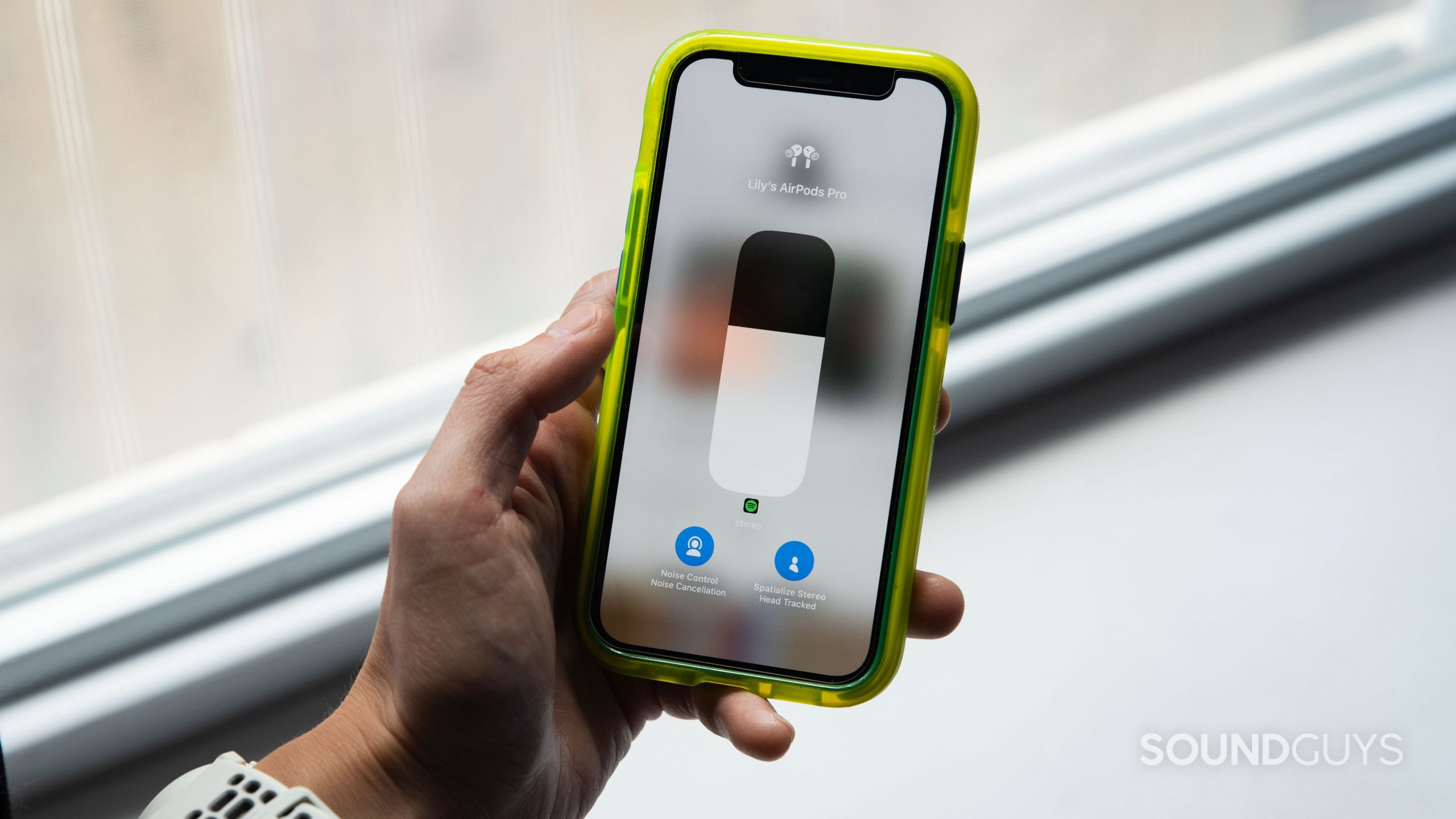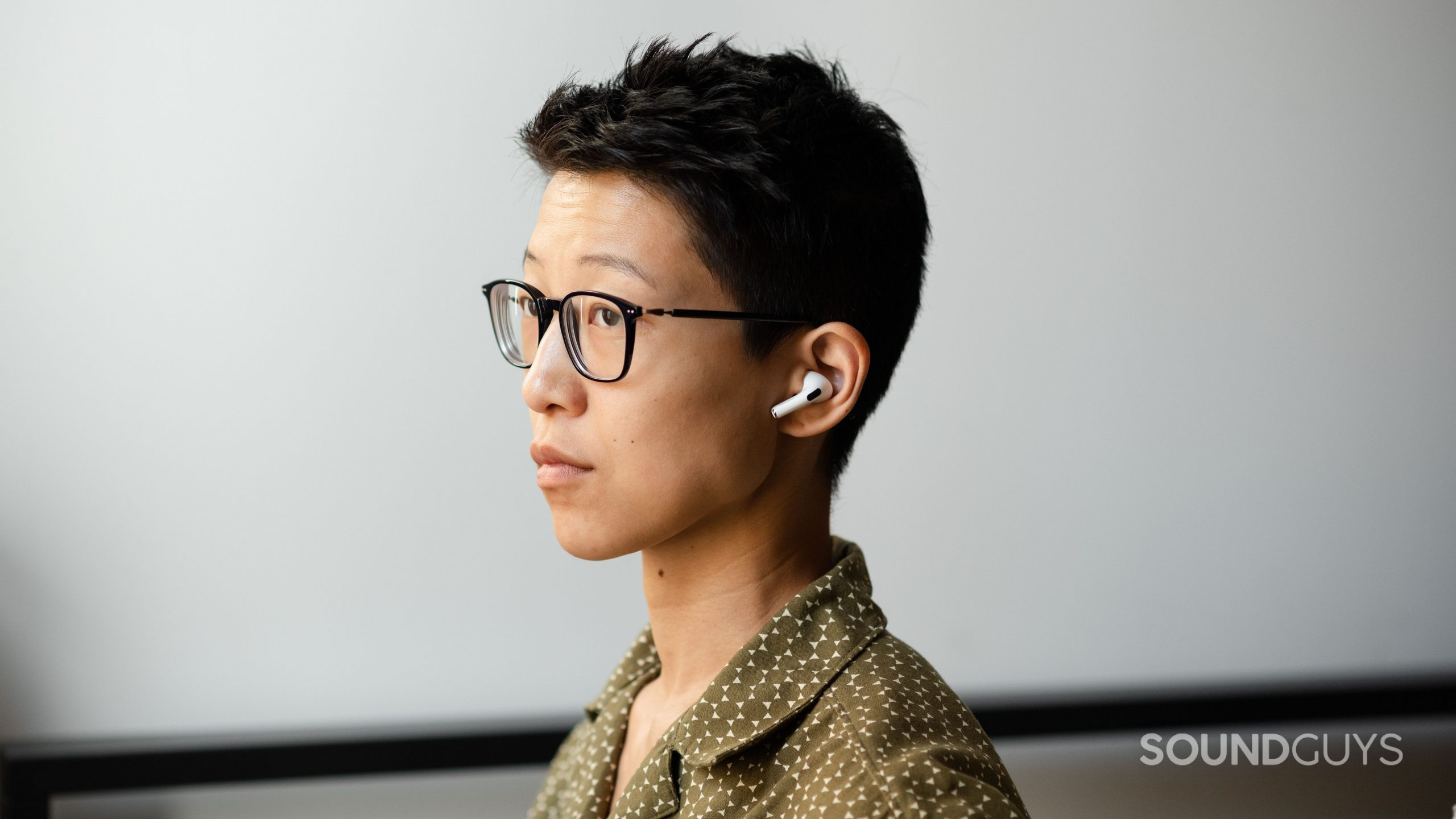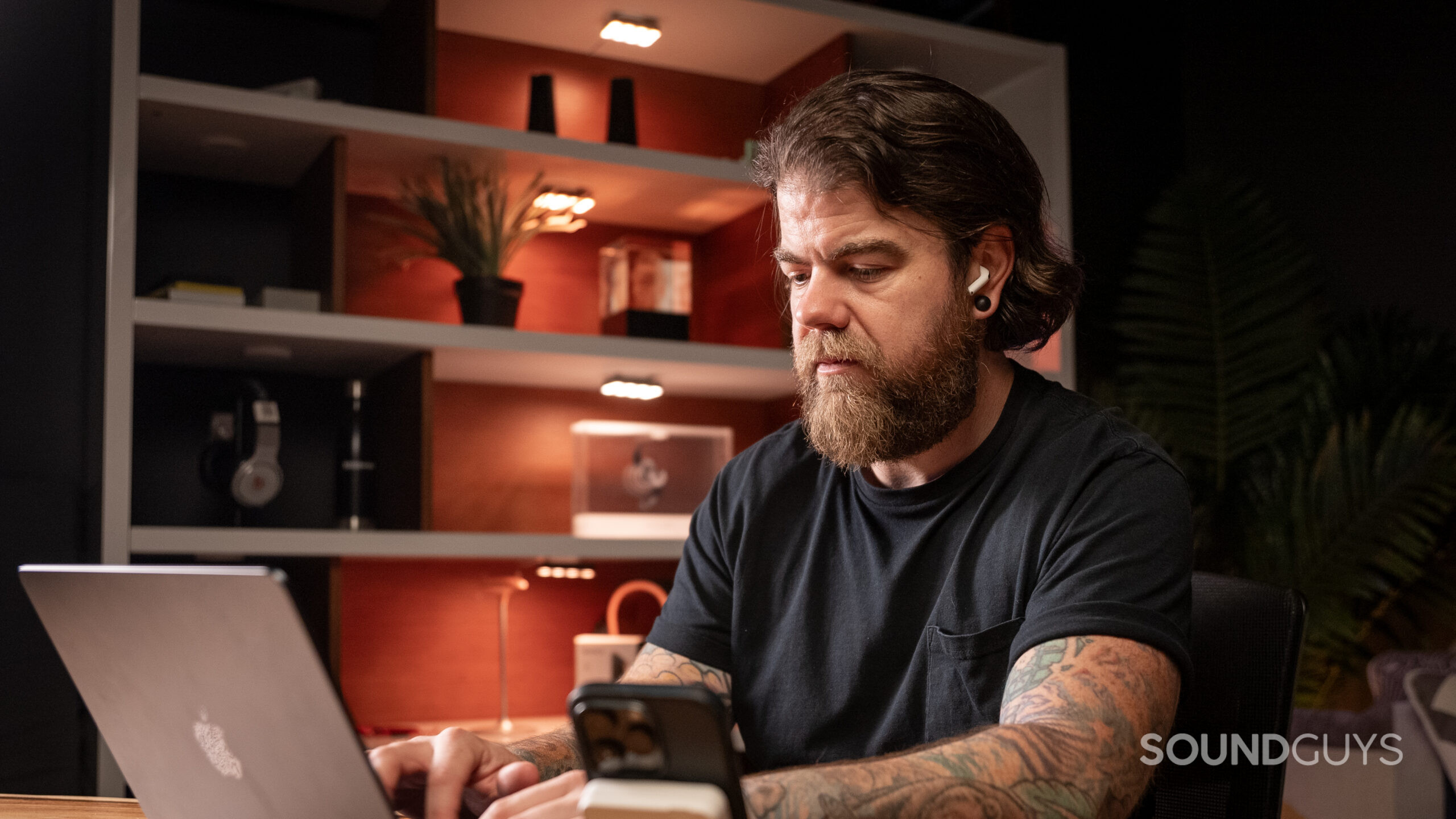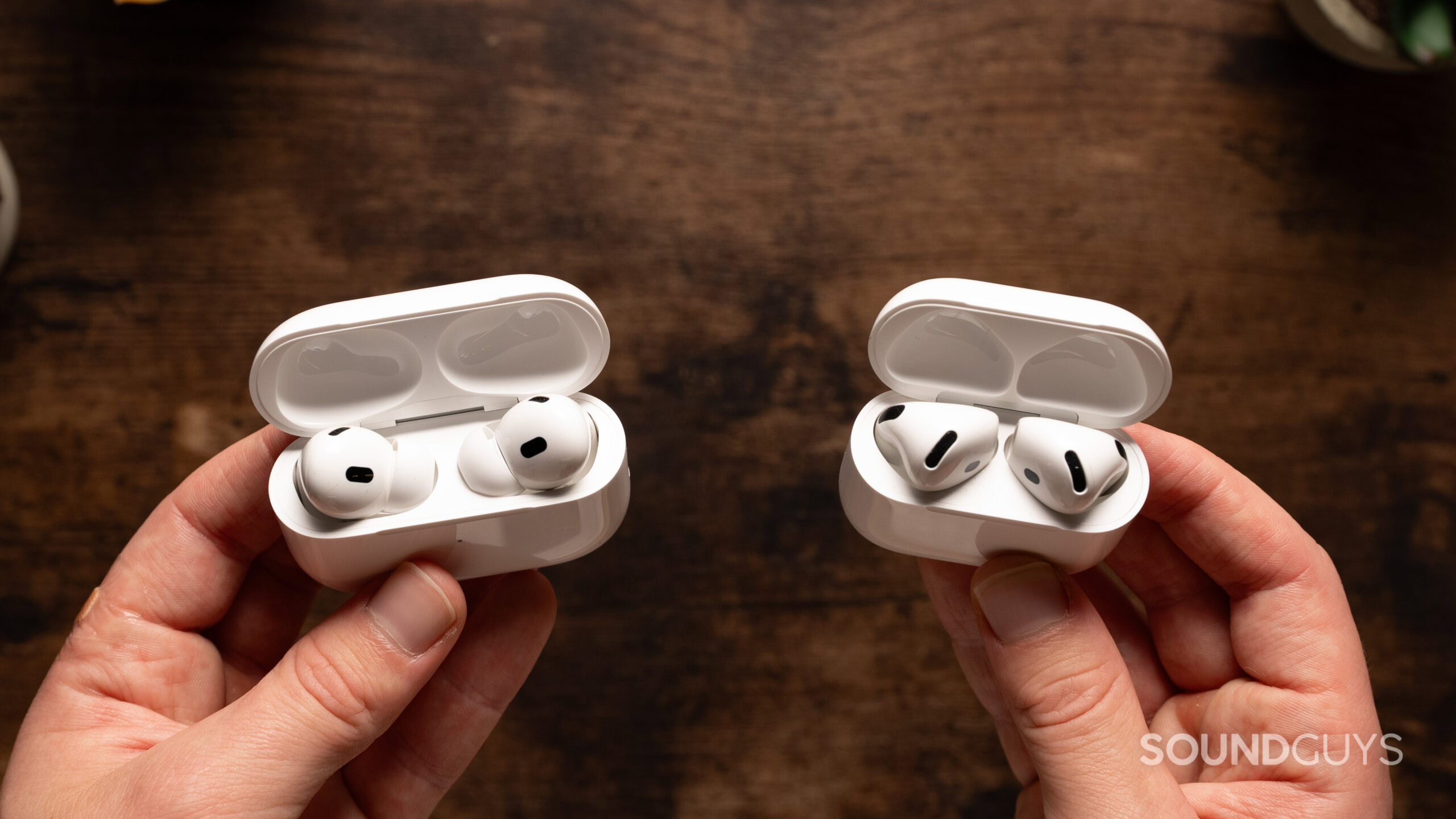All products featured are independently chosen by us. However, SoundGuys may receive a commission on orders placed through its retail links. See our ethics statement.
Don't use AirPods with Android
March 26, 2025
Apple AirPods are everywhere, but that doesn’t mean Android users should settle for them. While AirPods technically work with Android phones, they lose key features that make them worth the price. The AirPods 4 with ANC and the AirPods Pro 2 perform well on iPhones, but on Android, you’ll run into missing features and potential performance issues. Simply put, if you’re using an Android phone, there are better options for your money.
- On July 2, 2024, to add an FAQ section
- On March 26th, 2025 for formatting
AirPods lose a lot of features on Android

The main problem here is missing features because the main reason anyone buys AirPods of any flavor is the extras that come with the earphones. Because Android phones don’t have the requisite hardware to properly make use of the H1 or H2 chip in the AirPods themselves, there are several issues it causes. Unfortunately, you need an iPhone to get access to all of the functions baked into the earbuds, so Android users will have to live without:
- Spatial audio
- The ear tip fit test
- Auto EQ
- Control customization
- Find my earbuds
- Automatic device switching
- Conversation boost
- Battery life status indicator
- Automatic ear detection
Ouch. While some of those features are decidedly on the “nice to have” list, it’s a tough pill to swallow that what phone you have should decide how your headphones work. If you bought AirPods for any of the reasons above and can’t use them, you’ll feel like you have an incomplete product.
AirPods use hardware designed to work with Apple products
While it seems like a no-brainer to mention, performance also suffers due to the very same chip issue mentioned above. Sure, you can technically use AirPods with Android, but you’re not only losing out on features but also eschewing performance.
When it comes down to it, the inability for a phone to use the H1/H2 chip in the AirPods products means worse power efficiency even though it doesn’t necessarily mean that the product will fall short in other areas. For example, we confirmed in the lab that the ANC is pretty much the same whether you’re using the AirPods Pro 2 on Android, Windows, or iOS.
It’s frustrating because Apple making proprietary hardware that isn’t fully compatible with other sources means that the AirPods aren’t really all that great with 3rd-party sources. Given how expensive its other hardware options are, it’s a really rough kick to the… wallet.
Worse audio
Because the AirPods Max, AirPods Pro, and AirPods Pro 2 all use a feature called Adaptive EQ that automatically adjusts your sound quality based on your ears, it’s not so much that the audio quality is worse—it’s just that it doesn’t get tailored to you from the beginning. So, if you make the jump from Android to iOS, you may notice an improvement in audio quality and wonder why you can’t have it on your Android phone. This is one of those features that aren’t obvious you’re missing if you’ve never used it, but for some, losing it would be a dealbreaker.

Additionally, the ear tip fit test offered in iOS is also absent in Android. As any SoundGuy will tell you, audio quality is well and good, but it’s nothing without one thing: a good seal to the ear canal. While it’s understandable that Apple designed the AirPods so the earbuds would fit most ears, they cannot form a proper seal with your ear canals.
The negative effect of this is two-fold because 1) your music is going to lack bass since earbuds like these are tuned to match the acoustic impedance of a properly sealed ear canal, and 2) the AirPods allow for the ingress of external noise, which degrades sound quality due to compromised isolation. The latter makes increasing the volume much more tempting, which could ultimately impair your hearing.
Worse effective battery life
True wireless earphones have a penchant for having bad battery life, but that is a function of having tiny batteries. In that light, Apple has stuffed iOS with battery-saving features like one-bud listening or automatically stopping playback when you remove an earbud from your ear. Things like this aren’t accounted for in our battery measurements but do make an impact in real-world listening.

When battery cells are so small, any amount of off-time will make a positive impact. By maximizing the time the earbuds aren’t playing music, you can see a small but noticeable improvement in battery life. With an Android device, these automatic shutoffs don’t exist, and that means more juice getting used over time.
Reduced features mean worse value
At this point, it should be obvious that we’re going to say that an incomplete product could still be something you like. However, given how ephemeral true wireless earphones are, their value is pegged to immediate conditions. If you’re not looking to move on from your Android phone anytime soon, you will likely only use this product with one. If that’s the case, you’re spending more money on something with many competitors for similar features. In many cases, the AirPods will be a poorer value choice than going with an alternative.

In that light, you may want to check out alternatives to the AirPods and AirPods Pro that may play a little nicer with Android phones. There’s a lot on the market nowadays, and there are plenty of really cool models to choose from that may work famously for you. Still, it’s worth noting that even with the drawbacks, AirPods or AirPods Pro 2 could still be the right fit for you depending on availability in your country or even a happenstance of pricing. AirPods aren’t bad on Android; they’re not a complete product.
FAQs
Yes, you can technically use AirPods with Android, but many features will be missing, and performance will be reduced.
To pair AirPods with a Samsung or any Android phone:
- Open the AirPods case lid with the AirPods inside.
- Hold the setup button on the back of the case until the LED flashes.
- On your Samsung phone, go to Settings > Connected devices > Bluetooth.
- Turn on Bluetooth and select “Pair new device.”
- Select your AirPods from the list of available devices.
- Tap “Pair” when prompted.
- How to control AirPods Pro on Android?
While some advanced features aren’t available, you can still use basic controls:
- Use the touch-sensitive areas on the AirPods Pro stems for play/pause and skip tracks.
- Double-tap or press to play/pause.
- Triple-tap or press to skip to the next track.
However, customization of these controls isn’t possible on Android as it is on iOS. Additionally, features like spatial audio, Adaptive EQ, and automatic ear detection won’t be available when using AirPods Pro 2 with Android devices.